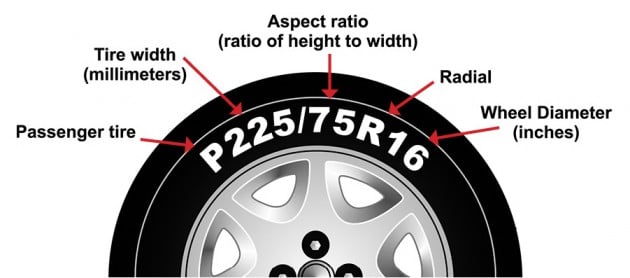We’ve all seen the code that runs around the side of your tire. But have you ever wondered what it meant or what it was for? It's your tire size, and it can be explained in the following manner:

A tire size code) will typically follow the format: P215/65R15 95H
What does each symbol mean?
P: The character in front of the code designates the type of tire. Most commonly, a tire will be P, designated for use in passenger vehicles. LT is the second most common tire type, used to represent light trucks. If there is no code, your tire is of European make, and has different load bearing capacities.
215: The first number designates the tire’s width, from sidewall to sidewall. In this case, the number 215 means that the tire width is 215 millimetres.
65: The number after the dash specifies the tire’s aspect ratio, which is the ratio of the tire’s width to its height.
R: The letter R refers to how the tire was created. In this case, R means radial, or that the layers of the tire run across it.
Wheel Diameter: The wheel diameter measurement is the end-to-end length, measured in inches. In this case, the diameter of the wheel is 15 inches.
Your tire typically has many other measurements that run along the wheel, but these are the most important. When you are specifying what type of tire you have to your mechanic, these are the key measurements you are going to need to remember.
If you're looking to purchase new tires or are looking to have your tires replaced and rotated, book an appointment online, give us a call at 647-361-4449, or shoot us a quick instant message, and we'd be happy to help.



